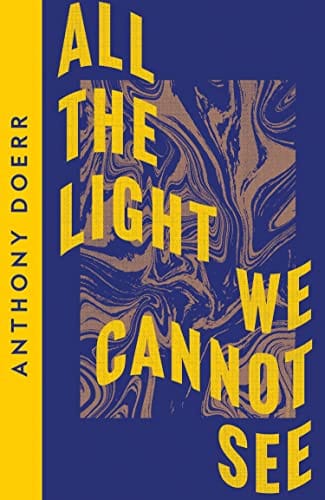All the Light We Cannot See: A Deep Dive into Anthony Doerr’s Masterpiece
Explore the plot, themes, characters, and symbolism of Anthony Doerr’s All the Light We Cannot See, plus insights into its Netflix adaptation and lasting impact.

Introduction
Anthony Doerr’s Pulitzer Prize–winning novel All the Light We Cannot See has captivated millions of readers with its lyrical prose, dual perspectives, and haunting portrayal of World War II. Set largely in Saint-Malo, a walled city on the Breton coast, the story follows a blind French girl and a German boy whose paths inevitably intersect. With its intricate structure and emotionally charged themes, the book continues to resonate nearly a decade after publication. This article explores the novel’s plot, characters, themes, symbolism, historical context, and its recent screen adaptation, helping new and seasoned readers appreciate the light hidden within its pages.
Plot Summary: Two Lives, One War
The novel toggles between two protagonists. Marie-Laure LeBlanc, blind since six, is raised by her devoted father, a locksmith at the Paris Museum of Natural History. When Nazi forces occupy Paris, father and daughter flee to Saint-Malo, carrying a fabled diamond called the Sea of Flames. In Germany, orphaned Werner Pfennig discovers a talent for radio repair. His gift earns him a place at a brutal Hitler Youth academy and eventually on a military unit that locates illegal broadcasts. As Allied bombs close in on Saint-Malo, Werner and Marie-Laure’s stories converge in a tense, luminous climax that ponders both the cost and the resilience of the human spirit.
Major Characters That Illuminate the Narrative
Marie-Laure LeBlanc embodies courage and curiosity despite her blindness, relying on tactile models of cities to navigate new environments. Werner Pfennig, driven by intellect and survival instincts, wrestles with the moral compromises demanded by the Third Reich. Daniel LeBlanc, Marie-Laure’s father, represents paternal devotion and sacrifice, painstakingly crafting miniature models to keep his daughter safe. Etienne LeBlanc, a reclusive great-uncle traumatized by World War I, becomes a clandestine broadcaster, while Frau Elena, Werner’s caregiver, offers glimpses of warmth in the austere orphanage at Zollverein. Finally, Sergeant Major Reinhold von Rumpel, a relentless gemologist, personifies Nazi greed as he hunts the legendary diamond.
Key Themes: Sight, Sound, and the Spectrum of Humanity
Doerr consistently contrasts blindness with insight, reminding readers that vision is not limited to the physical sense. Marie-Laure “sees” through her fingers, while many sighted characters remain morally blind. Likewise, Werner’s expertise in invisible radio frequencies symbolizes the unheard voices silenced by war. The novel interrogates fate versus free will, asking whether people can chart their moral courses inside oppressive systems. It also underscores the idea that acts of kindness—no matter how small—reverberate across space and time, much like radio waves themselves.
The Symbolism of Light, Radio, and the Sea of Flames
Light, paradoxically, is most present where it appears absent. The title hints at wavelengths human eyes cannot detect, suggesting hidden avenues of hope. Radio, another invisible force, serves as both weapon and lifeline. Werner tracks illegal broadcasts, yet those same frequencies deliver stories that sustain Marie-Laure and Etienne. The Sea of Flames diamond symbolizes the allure of immortality and the curse of greed. Its rumored power to protect the holder while dooming loved ones mirrors wartime selfishness that preserves some while sacrificing many.
Historical Accuracy and Setting
Doerr spent ten years researching everything from shell trajectories to sea algae blooms, lending the narrative granular authenticity. Saint-Malo’s meticulous descriptions—its granite ramparts, narrow rues, and tidal patterns—immerse readers in a city under siege. Equally vivid are depictions of the Zollverein coal mines and the National Political Institutes of Education (Napolas), elite schools that hardened German youth for war. By focusing on ordinary individuals rather than famous generals, Doerr foregrounds the everyday devastation wrought by global conflict.
The Netflix Limited Series Adaptation
In 2023, Netflix premiered a limited series adaptation directed by Shawn Levy, starring Aria Mia Loberti as Marie-Laure and Louis Hofmann as Werner. The production recreates Saint-Malo’s labyrinthine streets and bomb-scarred skyline with digital wizardry, while preserving the novel’s nonlinear structure. Though some subplots were condensed for screen time, key motifs—braille copies of Twenty Thousand Leagues Under the Sea, clandestine broadcasts, and the Sea of Flames—remain intact. Early reviews praised Loberti, herself legally blind, for bringing authenticity to the role and re-energizing interest in the source material.
Why You Should Read—or Reread—This Novel
Beyond its awards and sales figures, All the Light We Cannot See endures because it asks timeless questions: How do ordinary people maintain humanity amid systemic evil? Can beauty and science outlast destruction? The novel’s short, cinematic chapters make it highly readable, while its exquisite language rewards careful study. Whether you’re a historical fiction aficionado or someone seeking a moving story about resilience, Doerr’s work offers both intellectual stimulation and emotional catharsis.
Final Thoughts
Like the radio waves threading through its pages, All the Light We Cannot See transmits a message that transcends borders and decades: even in the darkest times, unseen connections bind us and unseen acts of courage illuminate the future. As you turn the last page—or finish streaming the adaptation—you may find yourself listening more closely for the quiet frequencies of hope in your own life. That, perhaps, is the brightest light we often fail to see.



